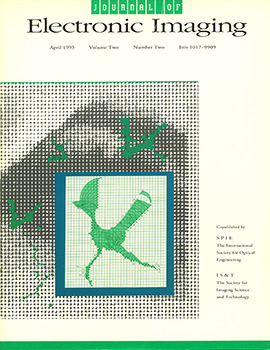Panagiotis Trahanias, Konstantinos Stathatos, Fotios Stamatelopoulos, Emmanuel Skordalakis
Journal of Electronic Imaging, Vol. 2, Issue 02, (April 1993) https://doi.org/10.1117/12.143731
TOPICS: Distance measurement, Optical character recognition, Picosecond phenomena, Shape analysis, Shape memory alloys, Detection and tracking algorithms, Binary data, Image filtering, Algorithm development, Pattern recognition
We study the use of mathematical morphology for handprinted character recognition. Our approach uses the morphological skeleton transform as the shape descriptor. An efficient skeleton-matching algorithm, which renders the similarity between two skeletons
as a distance measure, is employed. Based on this distance measure, a character is classified by a minimum distance classifier. The morphological skeleton transform contains complete shape information
and is shown as a powerful descriptor for this class of shapes. We also study the pattern spectrum as a shape descriptor for handprinted characters. However, the pattern spectrum conveys only information about the shape/size distribution of a given object, which turns out to be not very efficient for hand-printed characters. Experimental results demonstrate the efficiency of the skeleton-based approach and the inadequacy of the pattern-spectrum-based approach.



 Receive Email Alerts
Receive Email Alerts